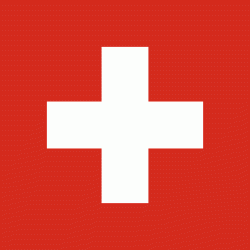Canton of Neuchâtel (Canton de Neuchâtel)
 |
The only part of present-day Switzerland to enter the Confederation as a principality (on May 19, 1815), Neuchâtel has a unique history. Its first recorded ruler, Rudolph III of Burgundy, mentioned Neuchâtel in his will in 1032. The dynasty of Ulrich count of Fenis (Hasenburg) took over the town and its territories in 1034. The dynasty prospered and, by 1373, all the lands now part of the canton belonged to the count. In 1405, the cities of Bern and Neuchâtel entered a union. The lands of Neuchâtel had passed to the Zähringen lords of Freiburg in the late 14th century as inheritance from the childless Elisabeth, Countess of Neuchâtel, to her nephews, and then in 1458 to margraves of Sausenburg who belonged to the House of Baden.
Their heiress, Johanna of Hachberg-Sausenberg (Jehanne de Hochberg), and her husband, Louis I d'Orléans, duc de Longueville, inherited it in 1504, after which the French house of Orléans-Longueville (Valois-Dunois). Neuchâtel's Swiss allies then occupied it from 1512 to 1529 before returning it to its widowed countess.
The French preacher Guillaume Farel brought the teachings of the Protestant Reformation to the area in 1530. Therefore, when the house of Orléans-Longueville became extinct with Marie d'Orléans-Longueville's death in 1707, Neuchâtel was Protestant, and looked to avoid passing to a Catholic ruler. The rightful heiress in primogeniture from Jeanne de Rothelin was Paule de Gondi, Duchess of Retz, who was Catholic. The people of Neuchâtel chose Princess Marie's successor from among fifteen claimants. They wanted their new prince first and foremost to be a Protestant, and also to be strong enough to protect their territory but based far enough away to leave them to their own devices. King Louis XIV of France actively promoted the many French pretenders to the title, but the Neuchâtelois people in the final decision in 1708 passed them over in favour of the Protestant King Frederick I of Prussia, who claimed his entitlement in a rather complicated fashion through the House of Orange and Nassau, who were not even descended from Jeanne de Rothelin.
Frederick I and his successors ruled the Principality of Neuchâtel (Fürstentum Neuenburg) in personal union with Prussia from 1708 until 1806 and again from 1814 until 1857. Napoleon Bonaparte deposed King Frederick William III of Prussia as prince of Neuchâtel and appointed instead his chief of staff Louis Alexandre Berthier. Starting in 1807, the principality provided Napoleon's Grande Armée with a battalion of rangers. The rangers were nicknamed Canaris (i.e. canaries) because of their yellow uniforms.
After the Liberation Wars the principality was restored to Frederick William III in 1814. The Conseil d'État (state council, i.e. government of Neuchâtel) addressed him in May 1814 requesting the permission to establish a special battalion, a Bataillon de Chasseurs, for the service of his majesty. Frederick William III then established by his "most-supreme cabinet order" (Allerhöchste Cabinets-Ordre, A.C.O.), issued in Paris on 19 May 1814, the Bataillon des Tirailleurs de la Garde following the same principles as with the Neuchâtel battalion within the Grande Armée. The Conseil d'Etat of Neuchâtel had the right of nomination for the battalion's officers. The commander was the battalion's only officer chosen by the monarch.
A year later he agreed to allow the principality to join the Swiss Confederation, then not yet an integrated federation, but a confederacy, as a full member. Thus Neuchâtel became the first and only monarchy to join the otherwise entirely republican Swiss cantons. This situation changed in 1848 when a peaceful revolution took place and established a republic, in the same year that the modern Swiss Confederation was transformed into a federation. King Frederick William IV of Prussia did not cede immediately, and several attempts at counter-revolution took place, culminating in the Neuchâtel Crisis of 1856–57. In 1857, Frederick William finally renounced the monarchy's claim on the area.
Map - Canton of Neuchâtel (Canton de Neuchâtel)
Map
Country - Switzerland
 |
 |
| Flag of Switzerland | |
Switzerland is geographically divided among the Swiss Plateau, the Alps and the Jura; the Alps occupy the greater part of the territory, whereas the Swiss population of approximately 8.7 million is concentrated mostly on the plateau, where the largest cities and economic centres are located, including Zürich, Geneva and Basel.
Currency / Language
| ISO | Currency | Symbol | Significant figures |
|---|---|---|---|
| CHF | Swiss franc | Fr | 2 |
| CHE | WIR Bank | 2 | |
| CHW | WIR Bank | 2 |
| ISO | Language |
|---|---|
| FR | French language |
| DE | German language |
| IT | Italian language |
| RM | Romansh language |















